
Marendaz myths and memories
DURING 1968 the Manchester Evening News carried a short article about Capt. Marendaz' cars, starting with the Marseel light car and his racing Marendaz "Blancmange". In this article two items…
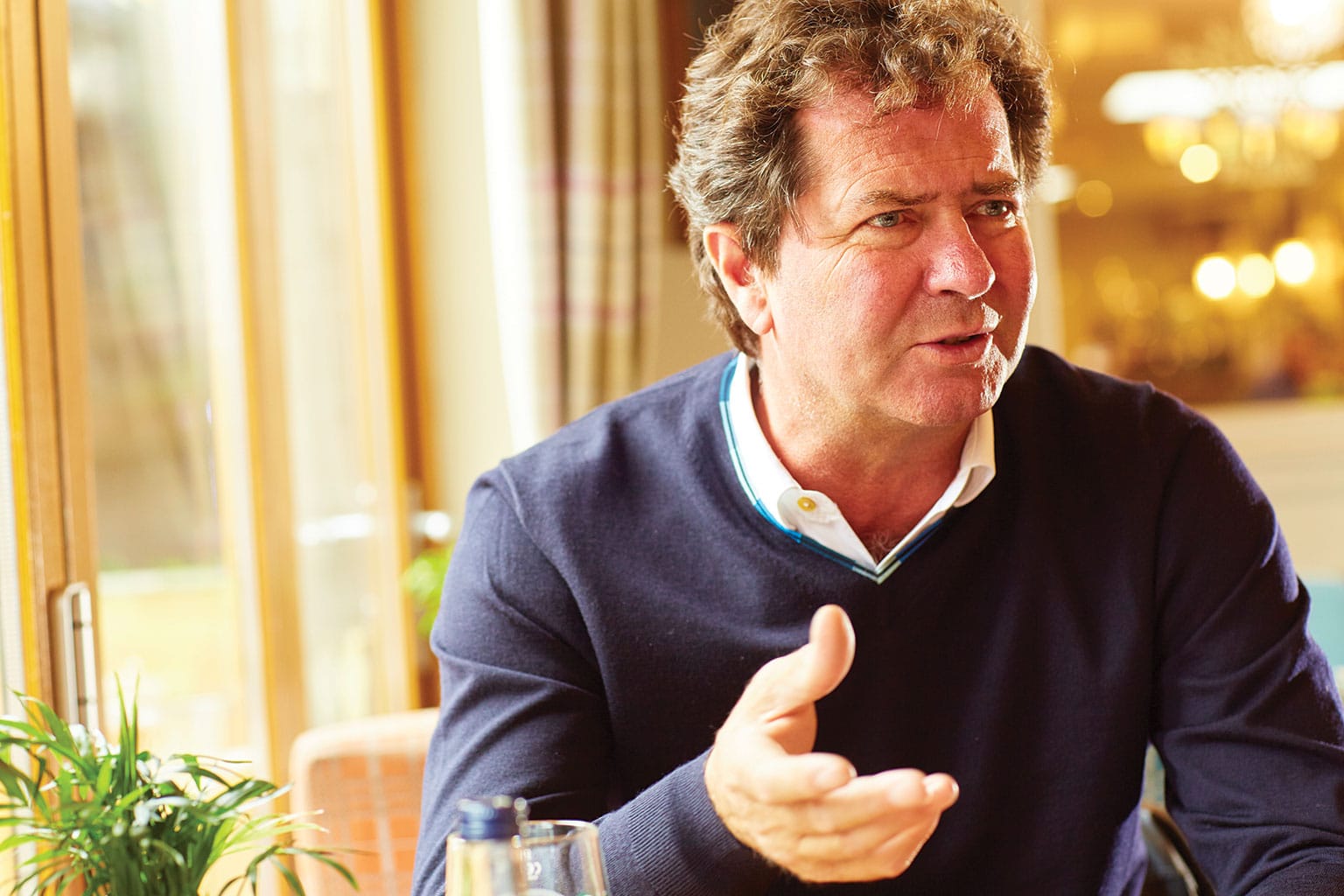
Howard Simmons
For an industry in which fragments of a second can be critical, motor racing doesn’t always place too high a premium on punctuality. When Motor Sport strolls through the front door of The Wheatsheaf in Farnham, however, Trevor Carlin is already enjoying his first glass of San Miguel and primed to chat.
Carlin’s name has been synonymous with success on the single-seater stepladder for the best part of two decades. His organisation presently runs teams in Formula 2, FIA F3, BRDC F3, the Euroformula Open (old F3, if you like), F4, IndyCar and the European Le Mans Series.
Many alumni have gone on to compete with distinction in F1, not least Sebastian Vettel, Nico Rosberg, Daniel Ricciardo, Kevin Magnussen and Robert Kubica, while several of the current IndyCar elite – Josef Newgarden, Will Power, Takuma Sato – have also raced in his colours. The cast is long and distinguished, particularly for somebody who began his active motor sport career as a gofer.
Before ordering miso-marinated lamb chops with sriracha and tahini sauce – plus another San Miguel – Trevor takes us back to 1979, when Sony was revolutionising the music market with its new Walkman and Margaret Thatcher’s Britain was just taking shape.
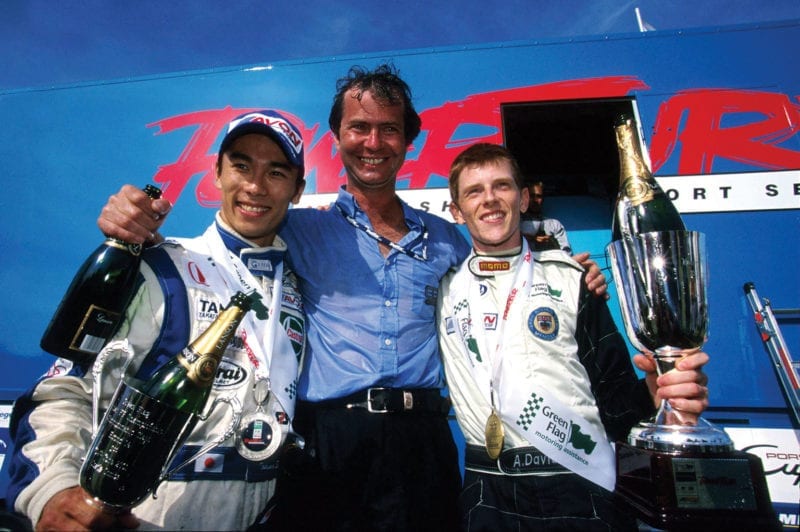
Champagne-stained Carlin with 2001 stars Takuma Sato – his first British F3 champion – and Anthony Davidson at Castle Combe
Motorsport Images
“I guess my racing interest stems from two uncles, Vic and Steve Hollman,” he says. “Vic was the general manager at Hawke Racing Cars in the 1970s, but the company was bought out and had ambitious plans to expand. Vic wanted to stick to his Formula Ford roots, so hired Hawke designer Ray Hughes, brought Derek Daly on board as a partner and set up PRS to manufacture cars in Welwyn Garden City, though they later moved to St Albans – about 100 yards from my home.
“I’d left school at 16 and had planned to attend business college, but there was a newsagent for whom I’d been doing odd jobs since my early teens. He was opening a second shop and asked me to run it. I walked past PRS on my way to and from work and would always stop in to see the guys. I loved cars and working at the newsagent was brilliant, because I got to read every car magazine for free as soon as it came out. I became completely obsessed with motoring literature – and still am – but eventually I tired of working there and quit.
“I didn’t have a plan, but popped to PRS and volunteered to do anything that might be required – van driving, sweeping the floor or whatever – and they immediately asked me to go to Hewland in Maidenhead. I’d no idea where that was, but it was my first racing job, aged 19. I drove there with a cheque and picked up a Mk9 gearbox. The guys then worked all night to finish the car and it was delivered the following morning – all very hand to mouth.”
PRS had performed strongly as a fledgling manufacturer from 1978, but its star had begun to wane by the time Carlin started helping out in ’81. “The company didn’t go bust as such,” he says, “but custom dwindled and things just fizzled out. I then spent a couple of years drifting around, doing painting, decorating and other random stuff.
“My mum had a driving school at the time and I’d just turned 21, so was now allowed to become an instructor. She had a decent little business so I decided to take the necessary exams, but a week after qualifying I received a call from Steve. He was now working for Ralt and had a vacancy for a storeman, which basically meant monitoring spares, keeping the place tidy and helping to build the cars. I was torn, because my mum had invested in me, but I’d been offered a racing job I wanted. The timing wasn’t great, but she was understanding and pointed out that I could always go back to being a driving instructor.”
That day still awaits.
The following Monday he arrived at Ralt at 7.30, was given a grey coat and commenced his formal motor racing career at the helm of a broom, sweeping the place clean before the dawn of a fresh working week.
“I loved being involved in the building process and seeing another new car roll out of the factory every day,” he says. “Ralt boss Ron Tauranac was a role model; it was a great education to see how well structured a factory could be. He would occasionally tick me off about keeping my hands clean and stuff, but he was a real inspiration – very open and happy to chat to us about anything. He was always busy, always running around the factory at high speed – absolutely turbocharged. I’m told he’s still the same today, in his 90s.”
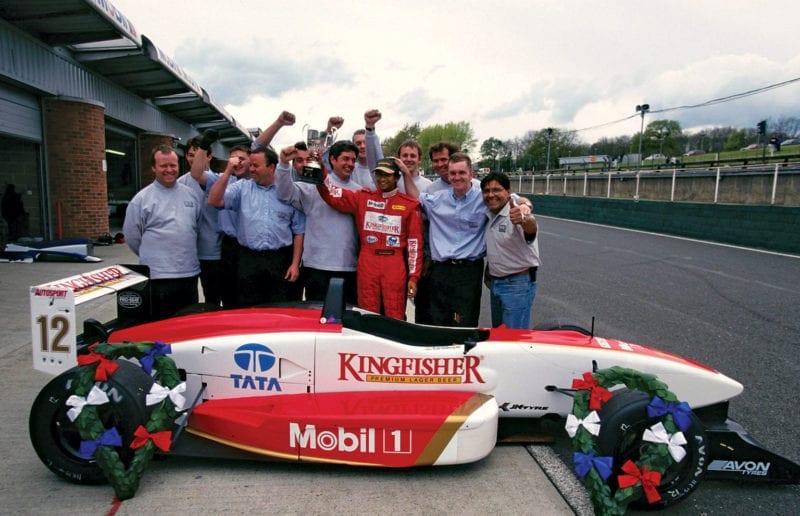
Carlin took its maiden F3 win at Brands in 1999, with Narain Karthikeyan
Motorsport Images
Carlin remained with Ralt until early 1986, when tragic circumstance created an opening higher up the food chain. Highly rated Canadian Bertrand Fabi had signed to contest the British F3 Championship with West Surrey Racing, alongside Damon Hill, but lost his life in a pre-season testing accident at Goodwood. When WSR opted to withdraw from the category for a year, Hill switched to Murray Taylor Racing and the team offered Carlin a job as his number two mechanic.
“That was good fun,” he says, “but two months later Steve phoned to tell me there was a job going for a parts guy with Ralt North America, in California. That was far too tempting – good money, living close to a beach – it was the start of a love affair with American racing. I stayed there two years, until I got yet another call from Steve. He was setting up his own operation, Bowman Racing, to contest the 1988 British F3 Championship and needed a team manager. Did I want the job? I’d acquired a fair bit of knowledge by then and the timing felt right, so I accepted.”
Bowman emerged as a significant force during the season’s course, Gary Brabham finishing second to JJ Lehto in the standings, and in 1989 the team expanded its effort to six cars. It was to be a contentious campaign, Bowman’s linchpin David Brabham and main rival Allan McNish (West Surrey Racing) both being stripped of points as a result of protests and counter protests about alleged engine infringements. It wasn’t until early the following year that the matter was ratified, all points were restored and Brabham was declared champion.
Bowman’s first title success did, however, have consequences: it decided to become an F3 constructor. “That started off partly because our engineer Bruce Carey felt Ron Tauranac had supported West Surrey in 1989,” Carlin says, “so he decided he wanted to take on and beat Ralt. The plan was to build a carbon fibre equivalent of the Ralt RT33 – a bit slimmer, much stronger, a little more aerodynamic. Bruce was brilliant at developing a car, but taking responsibility for a complete concept is very different. The more he got into it, the more he wanted to do – and of course that delayed the project.”
Still armed with a Ralt, Bowman driver Steve Robertson finished third in the 1990 British F3 Championship – but the new car still wasn’t ready by the campaign’s end. “We’d told people we were building it,” Carlin says, “but we had nothing to show, so drivers started signing up with other teams for 1991. We had nobody signed, no budgets and, as yet, no car. [Long-time ally] Anthony Hieatt and I ended up building it – we had one composites guy, one machinist, one fabricator and the rest was down to the two of us. We were pulling all-nighters three times a week, but unfortunately the car wasn’t quite quick enough. It showed pace every now and then [Robertson won twice at Thruxton in 1991], but not enough to win any customers and, as with PRS, the money eventually dwindled away.
“For 1992 I wanted to focus on running a team, so we bought a Reynard and signed Philippe Adams. That went reasonably well initially, but Marcel Albers was sadly then killed at Thruxton and Philippe moved to Alan Docking Racing to replace him, because he felt the Ralt chassis would be more competitive. That pretty much finished things for me, so I simply took the summer off – and the winter, come to that.
“I went to Australia in March 1993, to watch the CART race in Surfers Paradise, and ended up working with AJ Foyt’s team. I volunteered to build them a spare nosebox – and was then asked whether I could help with pitstops. I was wearing T-shirt and shorts, so said, ‘I don’t think so’, but the CART rules stated that all those in front of the pit wall had to wear fire suits – but that wasn’t a requirement if you were behind the wall. They just wanted somebody to support the refuelling hose from the rear, for which I didn’t have to be over the wall – but it was still potentially the most flammable job and I was in the least suitable possible clothing. In the end, happily, I wasn’t required.
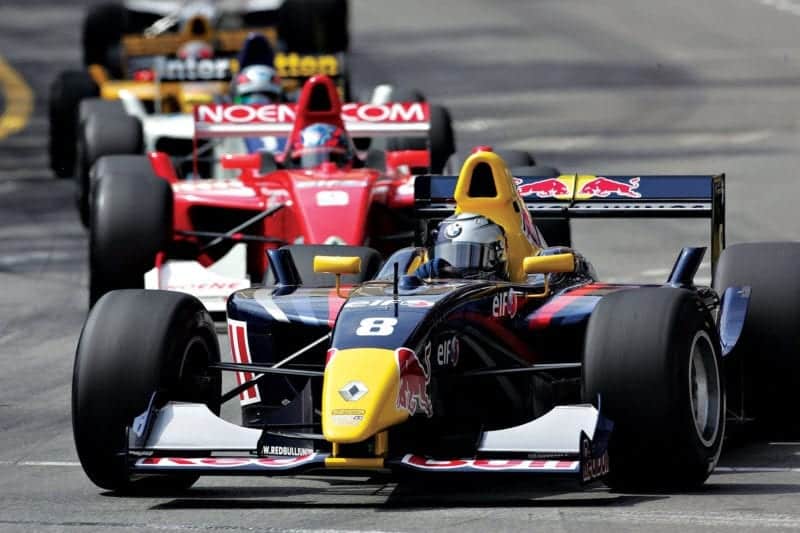
Sebastian Vettel raced in Formula Renault 3.5 with Carlin in 2007.
Motorsport Images
“I then flew to Long Beach, started touting around for a job as a mechanic and Derrick Walker offered me a position. He asked where my tools were and I promised I’d get them shipped over, so that I could start work at his Indianapolis base a couple of weeks later. In truth I didn’t have any, but my mum had moved to California by then and agreed to lend me some money. I placed an order worth $3000, arranged for everything to be shipped to Indy and went home to sort my affairs in the UK.
“Almost as soon as I returned, I received a message from West Surrey boss Dick Bennetts, who needed a new team manager. Personal circumstances eventually persuaded me to remain in the UK and I finally received my new tools about six months later…
“I absolutely loved working with Dick and it debunked lots of myths. Everybody used to say West Surrey was special, they did this, they did that, but in truth Dick just runs a really good, professional team. He had good budgets, good drivers and the right equipment. I’d worked with some brilliant people: Vic and Steve, Ron Tauranac, then Dick – it was a great education.”
WSR remained in F3 until the end of 1995, then landed a deal to run the factory Ford Mondeos in the British Touring Car Championship. Carlin didn’t remain with the project for long.
“I felt bad about it really,” he says, “because I’d been encouraging Dick to expand. The Ford deal was fantastic on the surface, but we didn’t go in with a sufficiently big budget and after the first race I decided I wanted no further part. The expectations had been so high, but we were so far behind the eight-ball that I felt it was going to be a disaster.”
He went his own way once more and, at the end of that year, landed a deal to run pitstop challenges for members of the public, at events organised by the Williams-Renault F1 team. He acquired a truck and some pit equipment, while two Reynard F3000 chassis were converted to look like grand prix cars. “We spent about four months on the road and it was brilliant,” he says. “I used a few proper race mechanics, plus some of my mates from the pub.”
Such were the seeds of the powerhouse Carlin has since become.
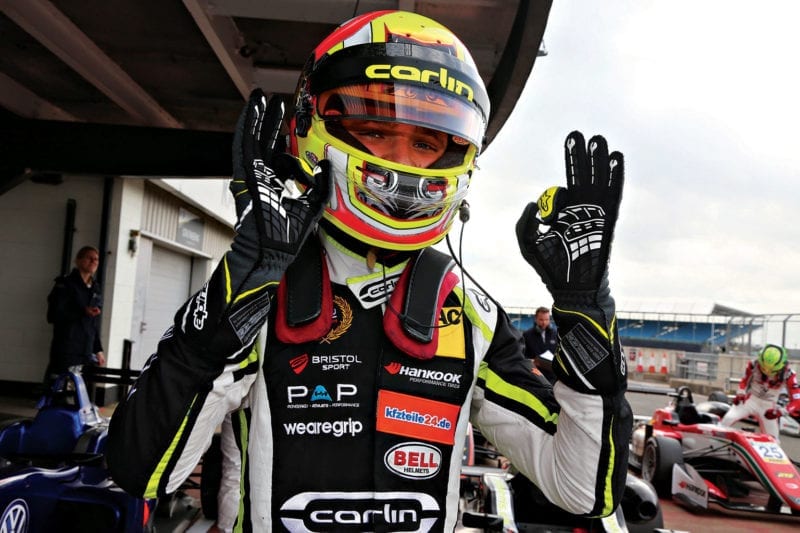
Lando Norris beat hot title favourite Prema to land 2017 FIA F3 title for Carlin
Motorsport Images
“At the beginning of 1997 I received a phone call from renowned driver coach Rob Wilson,” he says. “He was working with a young lad called Henry Stanton, who’d been racing in Vauxhall Lotus, and his father was interested in setting up a team. I had the kit because of the Williams pit challenge, though I didn’t have a workshop. All I had was a barn on farmland near Woking, where the McLaren Technology Centre now stands – I had to move out when McLaren bought the site.”
After meeting Stanton Sr, Carlin contacted former Ralt colleague Alan Howell, who had been running his own team – Weylock Racing – but was looking to sell up. “I asked him to let me pretend I owned his workshop, then promised to buy everything if I landed the deal to run Henry,” Carlin says. “One evening he lent me the key, I showed the Stantons around and we were in business. Now I just needed to find a name. I really didn’t want to call it after myself, but I looked in Autocourse for inspiration and all the best teams seemed to be based on family names – Ferrari, McLaren, Williams and so on. In the end it was more out of desperation than anything else that I settled on Carlin Motorsport. People came up and said, ‘That’s imaginative, must have taken you ages’ – but it had.”
With a staff of five plus a part-time truckie, his eponymous operation was in business. Did he have the faintest notion about how things might evolve (he presently has about 100 employees)? “Definitely not,” he says. “I was just trying to find a way of staying in motor racing and paying the mortgage. Nothing’s really changed today, it’s just that I’ve got a slightly bigger ball….”
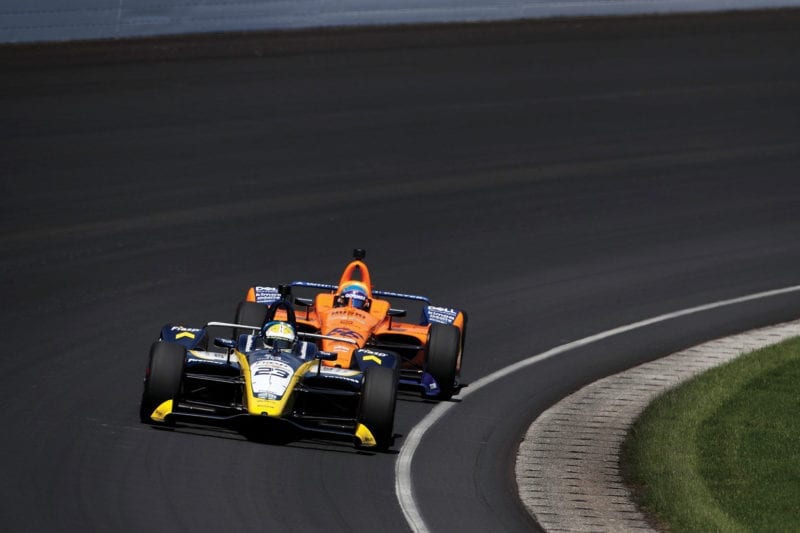
Indy 2019 was a disaster for Carlin’s team. Although Charlie Kimball – leading Fernando Alonso in practice – at least made the field
Motorsport Images
Stanton didn’t complete that first season – he missed a couple of races with a broken wrist, then later decided that he didn’t want to pursue a career in the sport – but Carlin recruited proven front-runner Jamie Spence for the Thruxton finale.
“His engine blew in the race,” he says, “but he’d been very quick and, given that we were up against Paul Stewart Racing, Promatecme, Alan Docking et al, we were punching above our weight and I think people realised we had a good crew.
“The plan for 1998 was to run Narain Karthikeyan, who had sponsorship from General Motors India. The deal was about to be signed off when GM pulled the plug because it wanted Narain to use Opel engines and we had Mugen-Hondas, so we appeared to be stuffed.
“We ended up doing a couple of tests early in the year – one of them with a youngster called Jenson Button. He was contracted to race in Formula Ford, but his manager Dave Robertson asked me to give him an F3 run at Pembrey because he wanted to know whether it was worth signing him to a management contract. It was February and we were the only car there, so there were no benchmarks, but you could hear every gearshift, every throttle blip. He did a reasonable time in the conditions, made no mistakes and was easy to work with. A month later Dave asked us to do it again – and this time Darren Turner was there with Portman Racing, running a new update kit, but Jenson was quicker than him in our standard car. We advised Dave to invest in him…”
Towards the campaign’s end Karthikeyan came on board, having split from his previous team, and scored two podium finishes from six races. He stayed for 1999, taking pole and Carlin’s first F3 win at Brands Hatch in April. “That,” says Carlin, “is when things began to tick along properly. Late that season, we were testing again in Pembrey and watched this crazy young kid hurling Diamond Racing’s B-class car around: Takuma Sato. He had massive commitment and brilliant car control, so we started talking to him and thrashed out a deal for 2000. That’s when we really upped our game and started winning more regularly.”
Sato was third in the championship that season – and beat team-mate Anthony Davidson to the title in 2001.

Barbadian driver Zane Moloney has been a multiple F4 winner for Carlin this year
Motorsport Images/Ebrey
It’s a refrain that has been repeated many times since – and in different categories, too. Nine drivers have won the British F3 title with Carlin, five of them – Sato, Jaime Alguersuari, Daniel Ricciardo, Jean-Éric Vergne, Felipe Nasr – subsequently going on to compete in F1. There have also been race wins and title successes in FIA F3 (Lando Norris was champion in 2017), GP2, F2, GP3, Formula Renault 3.5, FIA F4 and elsewhere. When 1997 world champion Jacques Villeneuve and former racer Patrick Lemarié recently announced their own racing scholarship, they confirmed that first prize would be a season with Carlin in British F4. And then there’s an IndyCar programme that began in 2018…
“Once we’d proved we had a high-quality team, with really good people, it was inevitable that some of them would want to move onwards and upwards – nine times out of 10 that means they leave you, a bit like a driver. I had a team manager and an engineer that wanted to do something new, so I looked at Formula Renault 3.5 and by expanding the team I was able to keep the good people on board. That’s what we’ve done ever since.”
Are there any drivers he wishes he could have run? “Only one or two,” he says, “because since we started to become successful many of the really good ones have come to us. I wanted to run Kimi Räikkönen after he’d mopped up in Formula Renault, so made an approach. When I heard we probably wouldn’t get him I was thinking, ‘Oh no, who’s got in ahead of us?’ I refused to believe it when first told he was graduating directly to F1, but sure enough…
“Running Sebastian Vettel in Renault 3.5 was interesting. Red Bull brought him to us at Misano and he looked OK, finishing on the podium in race one. I assumed that was about his level – a third-place merchant – but by the time I got to the airport that evening he’d been promoted to second because of somebody’s technical infringement… and when I landed in the UK he’d been declared the winner because of another. The following day he qualified on pole and won, so my initial assessment wasn’t quite right.
“The crew absolutely loved him. He was extremely serious about racing, but after debriefings he’d lie in the truck watching episodes of Little Britain on his laptop and laughing his head off.”
Ricciardo created a more immediate impression. “Our car had yet to turn a wheel when I arrived at a pre-season F3 test in Albacete,” he says, “but already the engineers were saying, ‘This new bloke is going to be bloody good.’ He’d taken them around in a road car the previous day, but despite not knowing the circuit had the place sussed straight away. He impressed us from minute one.”
It hasn’t all been smiles and success, though, and Carlin cites this year’s Indy 500 as his most crushing disappointment. Two of his three entries failed to qualify – as did the McLaren-run car of Fernando Alonso, for which Carlin was providing some technical assistance.
“Those were absolutely the toughest 10 days of my motor racing career,” he says. “The disappointment of not qualifying two cars – plus being attached to McLaren, which didn’t make the cut and blamed us – and then to be running so well in the race with Charlie Kimball, who was a comfortable eighth when he was taken out… I felt pretty low.
“When we arrived at the test day, Max Chilton said the car felt the best he’d ever had at Indy and Charlie was quick, so it never dawned that we wouldn’t qualify. But in the end we were a little too conservative in terms of the downforce we took off for qualifying – we just didn’t give them a fast-enough car. It wouldn’t have taken much to sort it out, but by the time we realised we were in trouble it was too late.
“IndyCar is incredibly tough. Even though it’s a spec formula, you can do a lot more than you might think. You order a rolling chassis from Dallara, for $350,000 – and when it arrives you think, ‘Where’s the rest of it?’ You then have to spend another $350,000, but there are different suppliers and lots of things you can do. We’re still playing catch-up in that respect and you really can’t underestimate the likes of Penske, Ganassi or Andretti. They are all great teams and run 10 cars between them, so even qualifying in the top 10 is a pretty decent effort…”
Carlin nowadays travels to about 30 events per season, but says he enjoys it as much now as he did when it all began. “It really is a seven-day job, but it’s self-inflicted so I can’t complain,” he says. “I still love it, but throughout it all I’ve never really had a long-term vision – it’s just been a matter of trying to keep the company on solid foundations. It has been going for more than 20 years now and I’d like it to keep going for at least another 20.”
CV
Born 13/3/63, St Albans, England
1981 Gofer for Formula Ford manufacturer PRS
1984 Trains as driving instructor before taking job as Ralt storeman
1986 Stint with Murray Taylor Racing as F3 mechanic, then joins Ralt North America
1988-92 Team manager, Bowman Racing, British F3
1993-early 1996 Team manager, West Surrey Racing
1997 Establishes his own eponymous F3 team
2001 Takuma Sato becomes Carlin’s first (of nine) British F3 champions; others include Daniel Ricciardo (2009) and Jean-Éric Vergne (2010)
2005 Short stint as sporting director of Midland F1
2010-11 Formula Renault 3.5 titles with Mikhail Aleshin & Robert Wickens
2014 GP3 title, Alex Lynn; Formula E partnership with Mahindra
2015 British F4 title, Lando Norris; first season in Indy Lights
2017 FIA F3 title, Norris; BRDC F3 title, Enaam Ahmed
2018 Champion team, FIA F2; maiden IndyCar season